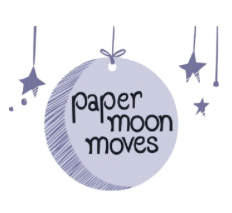This is another article in a series exploring the top reasons we keep stuff, according to David Ekerdt, professor of sociology and gerontology at the University of Kansas. Dr. Ekerdt has spent his career interviewing and studying people, digging into their attachment to their belongings and trying to understand why we love our things so much. He developed this list of the top reasons we keep things:
It seems useful.
We think it is worth money.
It gives us pleasure.
It represents us.
We may need it one day.
It was a gift.
Conservation is a virtue.
Legacy – we want to leave things to people when we die.
We keep because we can.
In this post I am exploring this idea that we keep things because we can.
Before clients hire us, we meet them in person to discuss their needs and see their homes. I can’t tell you how often we hear, during these visits, the following words: “I just don’t understand how we accumulated this much stuff!”
At this point the client will often throw up their arms in confusion. They just don’t get it – how there is suddenly so much to deal with? It didn’t seem like that much at the time.
The reason for this is relatively simple. As long as you live in the same place, you will just keep filling it. You’ll fill it with new things that you select and purchase; you’ll fill it with gifts that you receive, and with things that you inherit. And our natural tendency, as Americans, is to make room for new things we want. We get something new and we find space for it without tossing anything we already own.
There are exceptions to this, particularly with large things like furniture. When you buy a new sofa or dresser, for example, you usually need to get rid of the old one. We’ve all been through that hassle. Your lovely new sofa is arriving Wednesday between 9 and 2. So when do you remove the old sofa? There isn’t room for both of them, so you arrange to have the old one taken out.
But lots of things we own are smaller and easier to tuck away. If you find a really cool vase at a vintage store, you bring it home and select a shelf to display it on. As long as it fits – next to the other objects on the shelf – there’s no reason to get rid of any of the other objects. At worst you may have to move some things to the back of a closet of cabinet, but if you have the space, there’s no incentive to get rid of anything.
This isn’t a bad thing. It’s human nature. We always tell our clients that they haven’t done anything wrong by keeping all this stuff. They have kept it because they can. It’s simple, but true.
The only glitch is that, someday, you may not be able to keep it all. You may have to change where you live. You may have to move. Or, if you manage to stay in your home until you die, there will come a day when your heirs realize that they can no longer keep all these things.
Our entire industry – senior and specialty move management – exists precisely because there will be a time when you can no longer keep all these things. Most of our clients are really surprised by this. They may have lived in the same home for 30, 40, or 50 years, and all that time they never had to think at all about what it would be like if they needed to move somewhere new, and most likely smaller. This is precisely why people hire us.
I really wish it didn’t have to be like this. I hate meeting so many clients who are caught up in the shock and stress of having to deal with all their stuff.
What can you do to avoid this? There are some rules you can start to follow. The most popular is the old adage: something in, something out. In other words, every time you buy a new sweater, you donate or give away an old sweater. Every time you buy a new phone, you hand your old one to the retailer and have them recycle it.
There are also a lot of people advocating that we all live more minimalist lifestyles. I love this, in principal, and try to follow it myself, but I believe it only works for a small segment of the population. It’s just antithetical to human nature.
One thing you can keep in mind, every time you shop, is the thought that you will need to get rid of a lot of stuff someday. And it’s a lot easier to get rid of things a little at a time than it is to get rid of 80% of what you own (and believe me when I tell you that we have many clients who do indeed have to get rid of at least 80% of their belongings).
Dr. Ekerdt talks about “the invisible price tag.” Everything we purchase has an actual price tag, which includes the dollar amount you will need to pay for this item. But we also should think about the other – hidden – costs of owning something new. For example, will you need to pay to have the purchase serviced, or cleaned, regularly? If you no longer need it someday, will you need to pay someone to remove it? These are costs that we don’t consider when we are standing at the checkout counter, but maybe it’s worth paying more attention.
So you may want to keep this “someday” in mind as you bring new things into your home. Pause for just a moment before you buy something new, and imagine what will happen when you need to move someday.
You keep things because you can, but someday the “can” may become a “cannot.”





